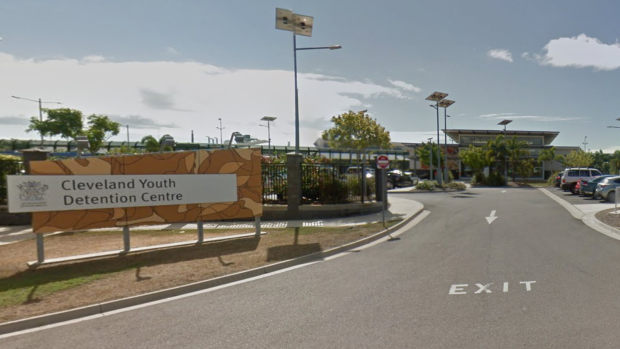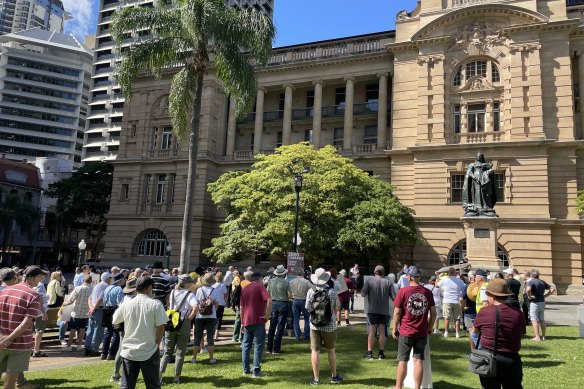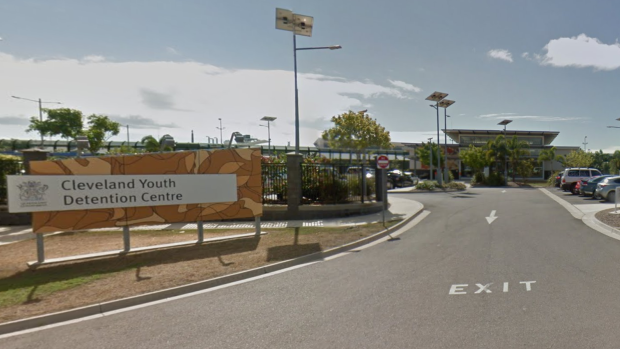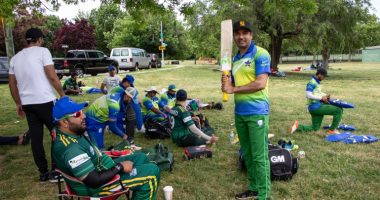She said long periods in isolation caused significant psychological damage in children – many of whom came from disadvantaged backgrounds, already distrusted authorities, and were not engaged with education and health institutions.
“Detention in those circumstances doesn’t reduce reoffending. In fact, it’s likely to increase offending because they’re coming out worse off,” Hayes said.
She said rehabilitation required consistent intensive support, which in turn required extensive government investment.
“All the investment is going to policing, not prevention and early intervention,” Hayes said.
She believes a concerted effort is needed to fully assess and address the needs of children identified as serious repeat offenders so they can be put on a productive path.
“At the moment, they’re just forgotten kids, they fall between the cracks,” Hayes said.
Under pressure over a perceived rise in youth crime, the Queensland government has introduced a raft of controversial laws ahead of the October state election.
Contingencies allowing children to be kept in police watch houses and adult prisons were controversially passed, over-riding the state’s own human rights act.
The Child Death Review report released in March revealed Queensland locked up more children than any other jurisdiction.
Loading
And there are fears the youth incarceration rate will skyrocket after the government’s decision this month to scrap detention as a last resort.
Children already sit in a watch house for days before being transferred to detention, where they face long hours in isolation, Cairns-based Youth Empowered Towards Independence chief executive Genevieve Sinclair said.
“Some of these kids have been locked down over a month, often [it’s got] nothing to do with their own behaviour … just because it’s understaffed,” she said.
As a result, they come out of detention angrier and angrier.
In Townsville’s Cleveland Youth Detention Centre, insufficient staff meant children could not be moved to classrooms for education programs, Sinclair said.
Additional staff had helped the situation, but Sinclair said absenteeism and attrition was high.

The Cleveland Youth Detention Centre in Townsville had insufficient staff to accompany children to classrooms. Credit: Google Maps
Children may have access to self-directed learning material when isolated, but Sinclair questioned the efficacy of such paperwork being slipped under the door to a young person with intellectual disabilities and low literacy levels.
While the government spruiked funding for vulnerable young people and those in detention, Sinclair said: “The reality is, it’s not being delivered if you’ve got no workforce.”
The Voice for Victims advocacy group has marched on parliament calling for an even tougher stance on youth crime.
But youth workers find calls to lock up juvenile offenders frustrating because it needs to come with rehabilitation, the opportunity to understand what they have done and its impact on others, and the development of emotional skills.

The Voice for Victims advocacy group has called for an even tougher stance on youth crime.Credit: Courtney Kruk
“Otherwise, you’re just sending children out that are angrier and more traumatised than before they went in, and then they come out and inflict more harm on the community,” Sinclair said.
“If we lock children up without any rehabilitation, we actually just drive crime … and that’s what’s happened, and there are no plans to stop it.”
The capacity of Queensland’s youth detention system is set to almost double with the construction of an 80-bed facility in Woodford north of Brisbane by 2026, and another to be operational in Cairns a year later. The 76-bed Wacol Youth Remand Centre is also on track to be completed by the end of the year.
But despondent youth workers who want to engage in rehabilitation say building more detention centres won’t help.

An artist’s impression of the 80-bed youth detention centre being built at Woodford.
Sinclair regards the number of Indigenous children incarcerated in poor conditions as an international shame, claiming there would be outrage if it was happening elsewhere.
“There are no other countries locking up Indigenous kids like we are in Queensland in the sorts of conditions we are,” she said.
A teenager isolated 24 hours a day for 10 days at the Cleveland detention centre suffered significant harm because of the circumstances in which he had been detained, District Court Judge Tracy Fantin said in another judgment.
“It is unsurprising that if you lock up a child for such lengthy periods of time with no stimulation other than access to a television, a child is likely to respond by behaving poorly.
“As other judicial officers in other jurisdictions in this country have observed, if you treat a child like an animal, it is unsurprising that they may behave like an animal.”
Lifeline 13 11 14; Kids Helpline 1800 55 1800 (for people aged 5 to 25).
AAP
Read More: World News | Entertainment News | Celeb News
SMH







